Still betting on Nvidia? Our AI picked this stock instead; it’s up 96%+ THIS MONTH
Introduction & Market Context
Norconsult ASA (OB:NORCO) reported its second quarter and first half 2025 results on August 20, 2025, showcasing solid growth despite calendar effects and varying regional performance. The Norwegian engineering consultancy firm’s stock closed at NOK 42.05 on August 19, down 1.87% ahead of the earnings presentation, reflecting continued investor caution despite the company’s growth trajectory.
The presentation, delivered by CEO Egil Hogna and CFO Dag Fladby, highlighted the company’s performance across its diverse business areas and geographic regions, while also announcing a significant acquisition to strengthen its infrastructure capabilities.
Quarterly Performance Highlights
Norconsult reported net revenue of NOK 2,468 million for Q2 2025, up from NOK 2,399 million in the same period last year, representing 6% organic growth when adjusted for calendar effects. The company’s adjusted EBITA came in at NOK 152 million, down from NOK 263 million in Q2 2024, though the adjusted EBITA margin improved slightly to 11.2% from 11.0% when accounting for calendar effects.
As shown in the following comprehensive financial summary for Q2 2025:
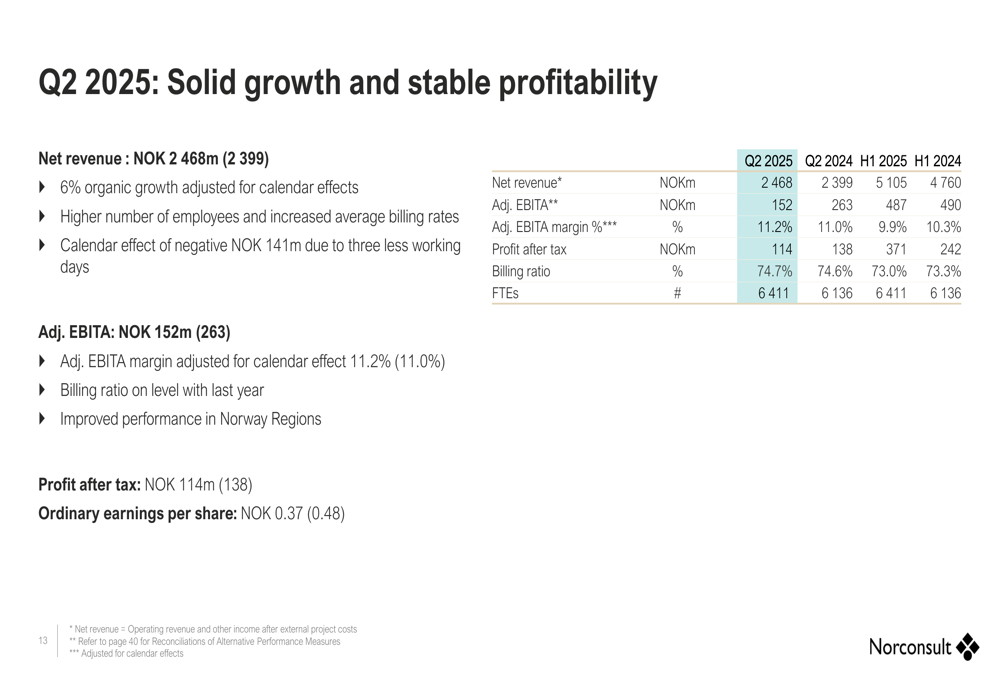
For the first half of 2025, Norconsult achieved net revenue of NOK 5,105 million, compared to NOK 4,760 million in H1 2024. The H1 2025 adjusted EBITA was NOK 487 million, slightly down from NOK 490 million in the previous year, with the adjusted EBITA margin at 9.9% versus 10.3% in H1 2024. Profit after tax for H1 2025 reached NOK 371 million, a significant increase from NOK 242 million in H1 2024.
The following chart provides a detailed breakdown of H1 2025 performance:
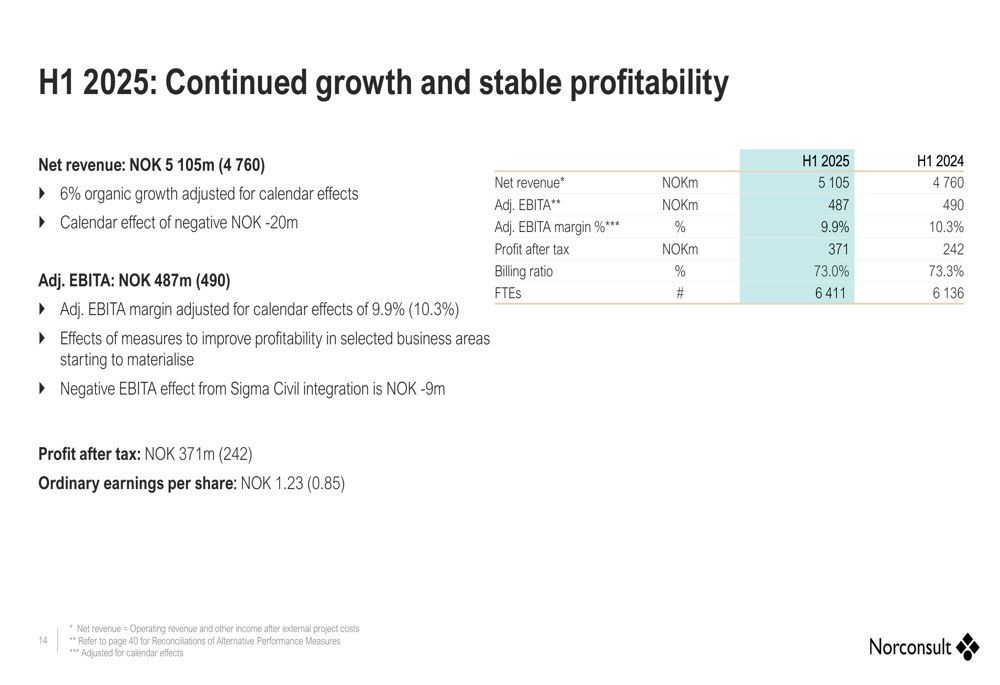
A closer look at the EBITA contributors for Q2 2025 reveals significant variations across business areas, with Norway Regions showing the strongest improvement while calendar effects had a substantial negative impact of NOK -141 million:
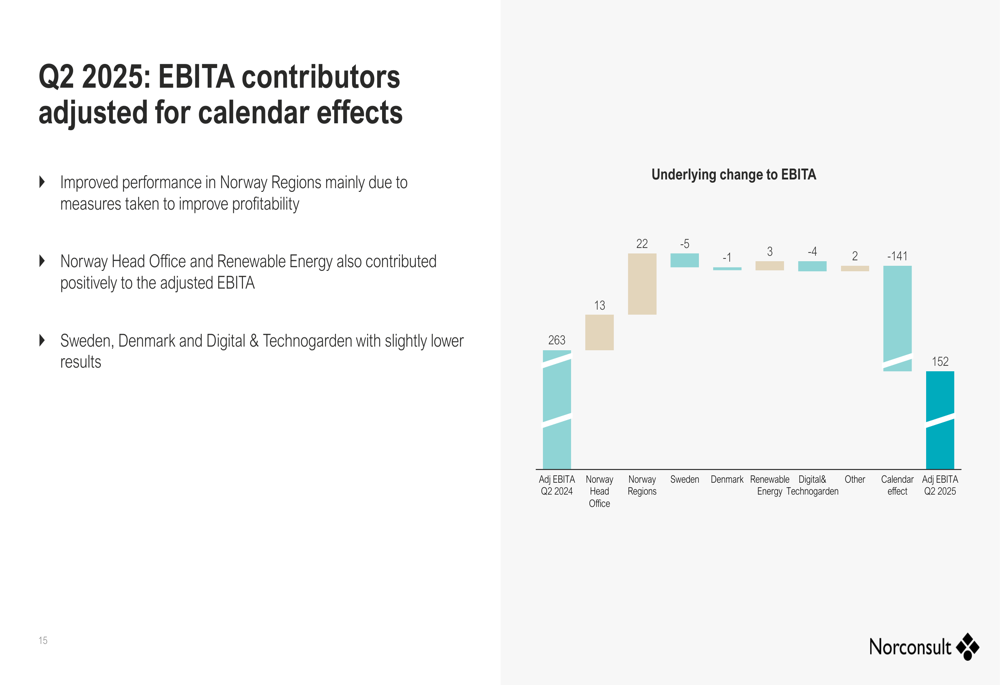
Business Area Performance
Norconsult’s performance varied significantly across its business areas and geographic regions. Norway Regions delivered strong results with 9% organic growth and an improved adjusted EBITA margin of 14.4% (up from 12.5% in Q2 2024). Norway Head Office also performed well with 6% organic growth and a margin of 15.5% (up from 14.8%).
Sweden faced challenges with its adjusted EBITA margin declining to 3.2% from 5.1%, partly due to a NOK -6 million negative effect from the Sigma Civil integration. Denmark achieved 7% organic growth but saw its margin decrease to 6.2% from 7.3%.
The Renewable Energy segment maintained strong profitability with a margin of 17.8% (up from 17.5%), while Digital & Technogarden experienced an 11% revenue decline and margin pressure, with its adjusted EBITA margin falling to 3.4% from 5.1%.
Strategic Initiatives
A major highlight of the presentation was the announcement of Norconsult’s acquisition of the Aas-Jakobsen Group, a leading Norwegian engineering consultancy specializing in infrastructure projects. The acquisition, which closed on August 6, 2025, represents a strategic move to strengthen Norconsult’s capabilities in delivering large and complex infrastructure projects.
The following chart illustrates Aas-Jakobsen’s stable growth trajectory and strong profitability:
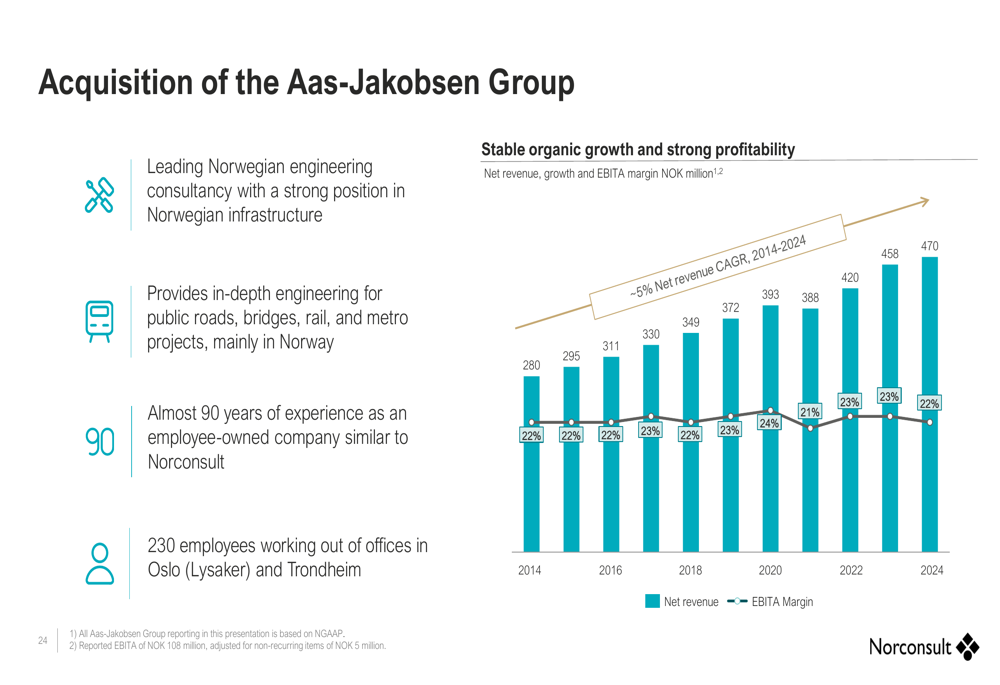
The acquisition carries an enterprise value of NOK 1,430 million, with a final equity purchase price of NOK 1,523 million. The transaction structure includes an 80% cash consideration (NOK 1,218 million) and 20% share consideration (NOK 305 million). Norconsult expects pre-tax cost synergies of approximately NOK 25 million, fully phased in from 2028.
As shown in the strategic rationale and transaction highlights:
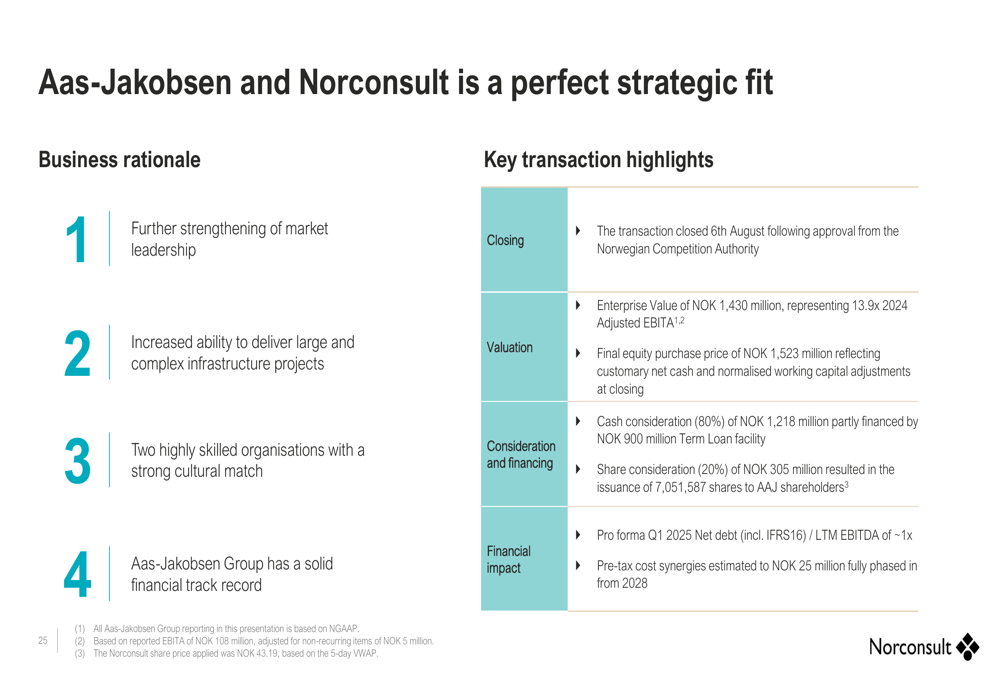
Norconsult also provided an update on the integration of Sigma Civil, which was acquired earlier. All former Sigma Civil teams have been fully integrated into Norconsult Sweden business units and departments, with actions to improve billing ratio showing positive development since April. Three of five Sigma Civil offices have been relocated to Norconsult offices, with cost synergies related to co-location starting to materialize.
Financial Position
Norconsult maintained a strong balance sheet with cash and cash equivalents of NOK 1,186 million as of June 30, 2025, down from NOK 1,612 million at the end of 2024. The company’s net working capital stood at NOK 33 million, compared to NOK -318 million at the end of 2024.
Cash flow from operating activities was NOK 395 million in Q2 2025, down from NOK 501 million in Q2 2024, reflecting seasonal variations. The following chart illustrates these seasonal patterns in cash flow:
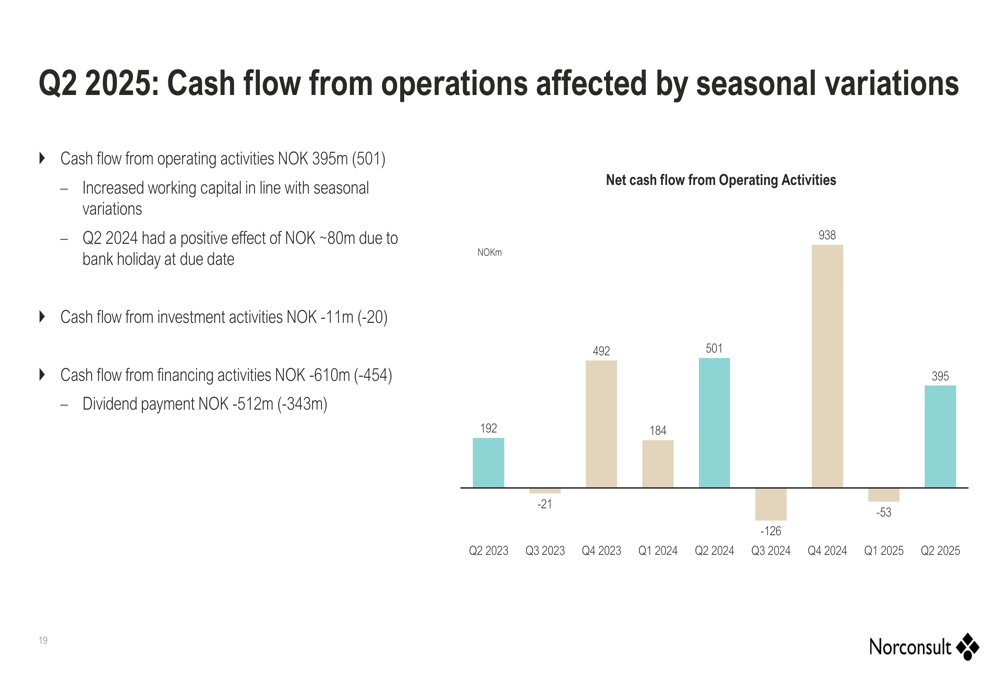
The company’s order book increased to NOK 7.1 billion, up from NOK 7.0 billion in Q1 2025, indicating continued strong demand for Norconsult’s services.
Forward-Looking Statements
Looking ahead, Norconsult expects the overall market to remain stable, though with continued uncertainty linked to the international political situation. The company sees signs of optimism in the private market for Buildings & Architecture, while anticipating stable demand in Infrastructure and continued strong activity in the energy sector.
The outlook for other industry markets is more mixed, as geopolitical factors may delay investment decisions in certain industries. Norconsult plans to continue taking proactive measures to improve underlying profitability and maintain efficiency in selected parts of the business.
Conclusion
Norconsult’s Q2 2025 presentation demonstrates the company’s ability to deliver solid growth despite varying regional performance and significant calendar effects. The acquisition of Aas-Jakobsen Group represents a strategic move to strengthen its infrastructure capabilities and market position.
While the company faces challenges in some regions, particularly Sweden and Digital & Technogarden, strong performance in Norway Regions and Renewable Energy, along with a growing order book, provides a foundation for continued growth. Investors will likely focus on the company’s ability to successfully integrate acquired companies and improve margins across all business areas as it navigates an uncertain geopolitical environment.
Full presentation:
This article was generated with the support of AI and reviewed by an editor. For more information see our T&C.
